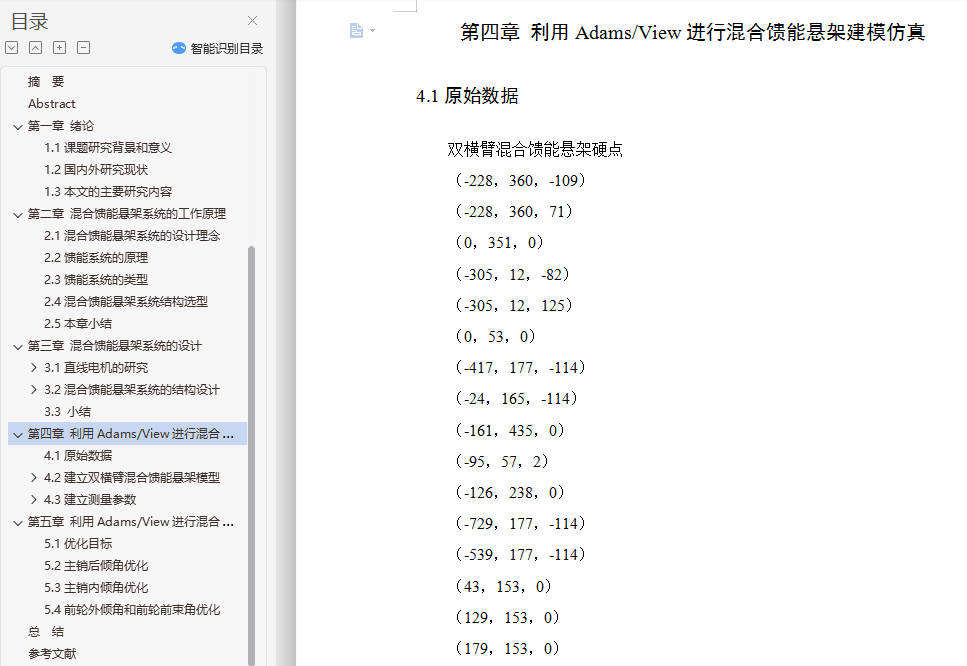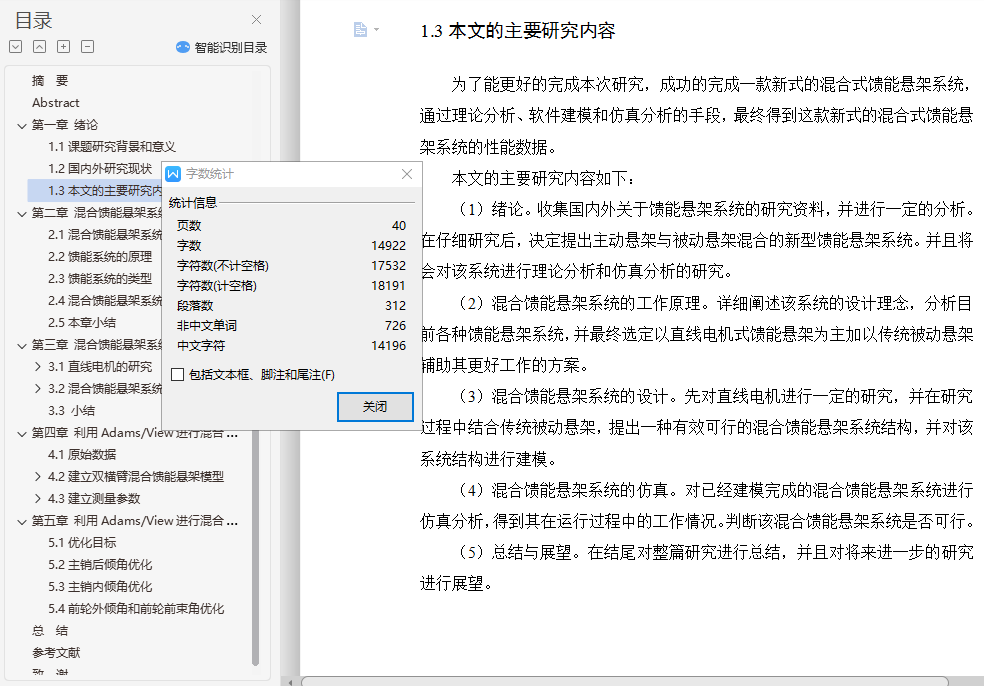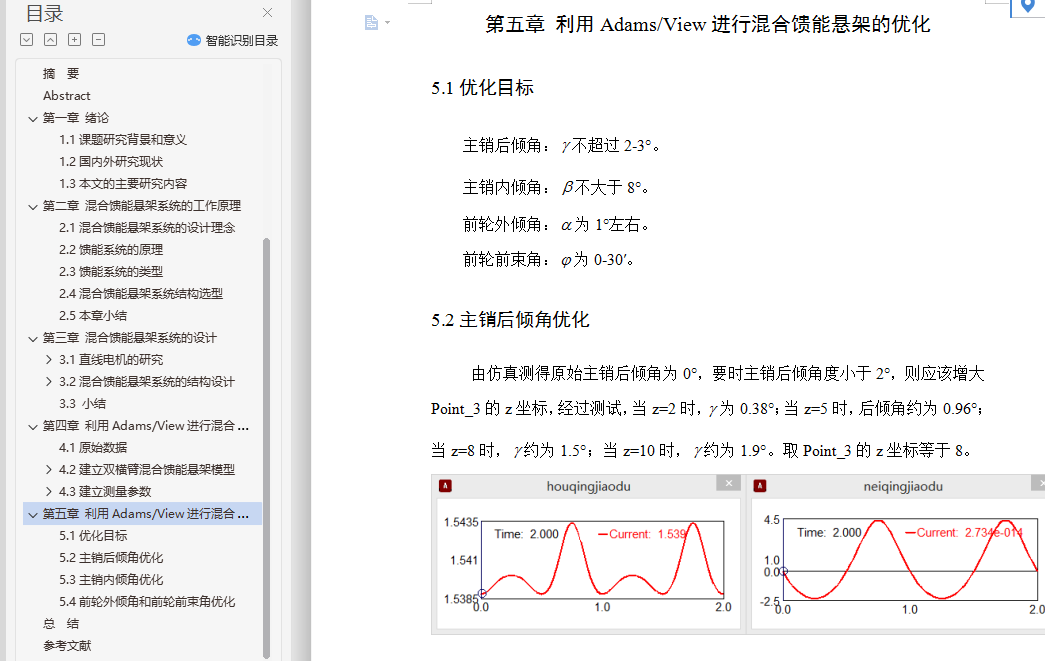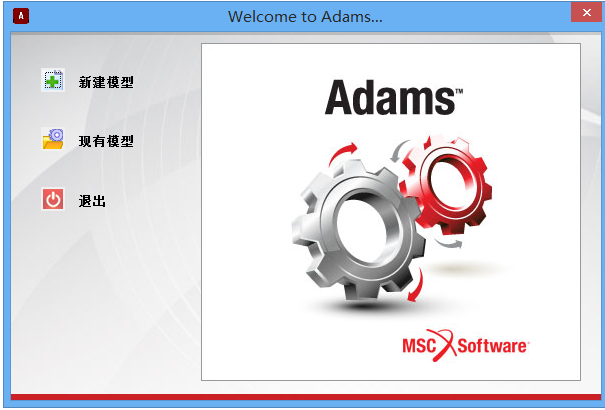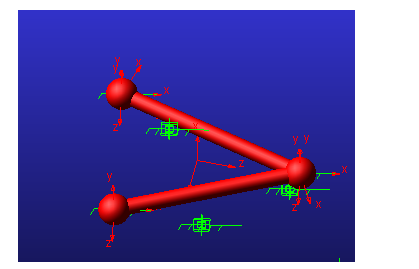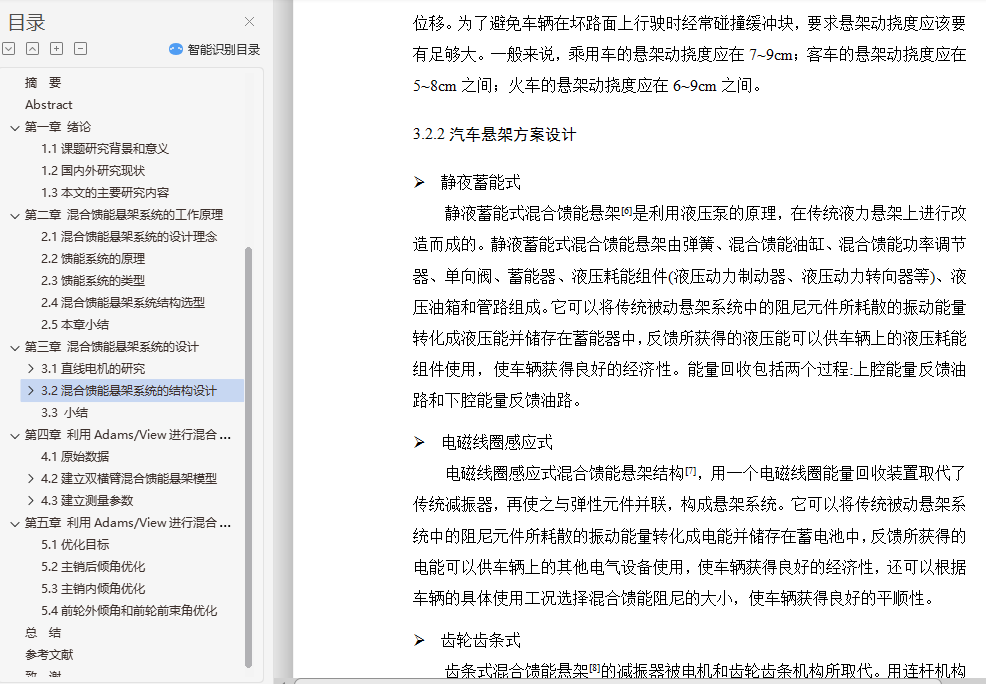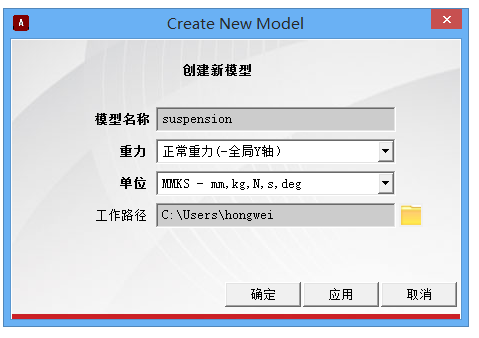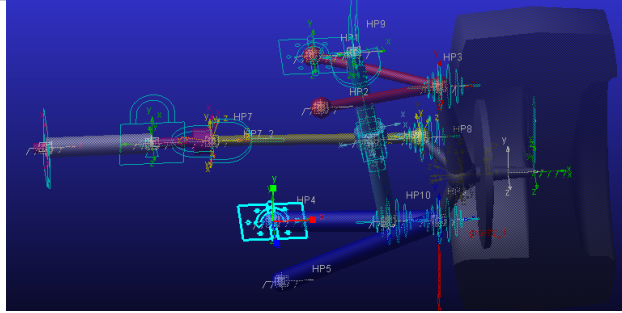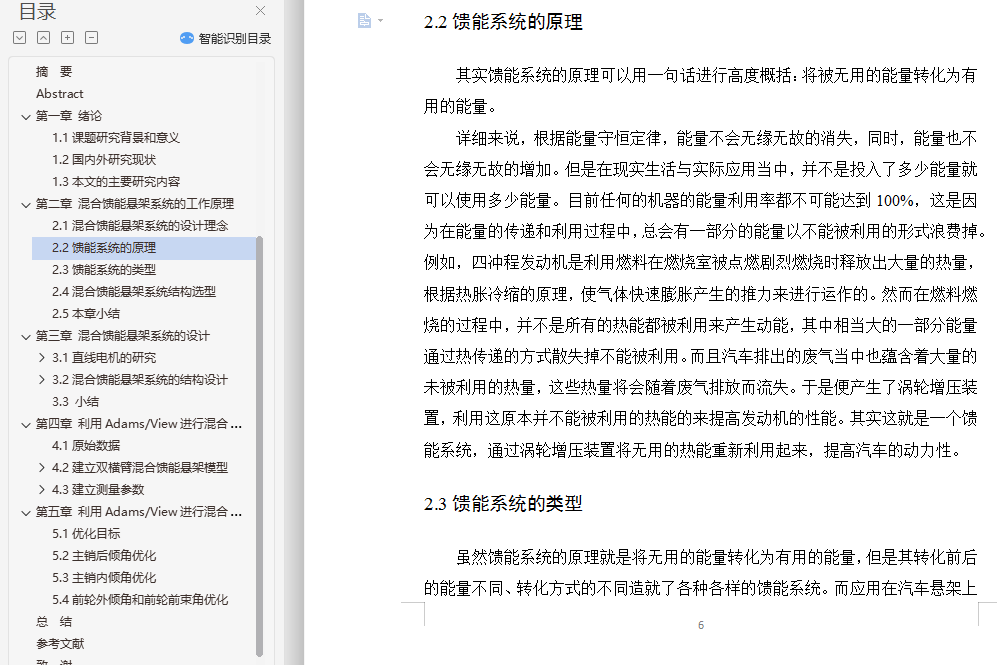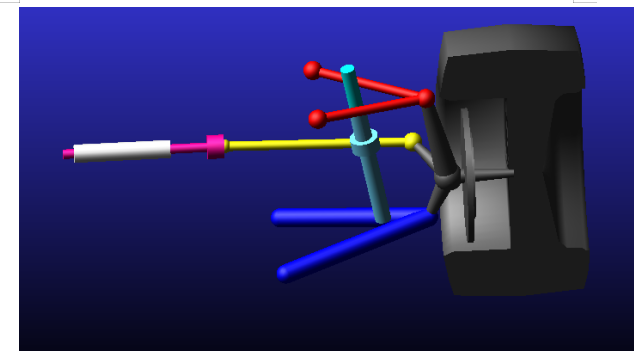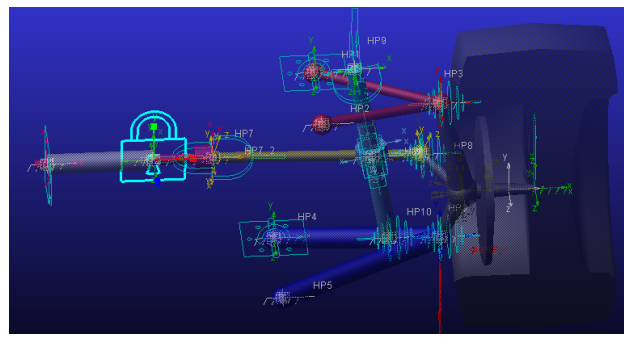摘 要
本文详细介绍了混合式馈能悬架系统的设计与仿真。在目前的环境来说,传统类型的被动悬架已经逐渐不能满足用户的需求,也不符合市场的发展现状,主动悬架也存在稳定性无法保证的缺陷。这大环境上来说,节能减排也是一个很重要的项目,各行各业也都要进行节能减排,为绿化地球贡献出一份力。针对目前的这种状况,本文提出一种新型的混合式馈能悬架系统。
混合式馈能悬架系统是基于传统被动式悬架和主动悬架进行创新的新型悬架系统。其设计的理念是要结合传统被动悬架和主动悬架各自的优点,并加入馈能的功能以达到节能减排的目的。其具体设计内容是将传统被动悬架与主动悬架进行有机结合,在得到主动悬架的高性能的同时,保证得到传统悬架的高稳定性。
本文首先探讨了混合式馈能悬架的设计理念和工作原理,根据其工作原理和设计理念,设计混合式馈能悬架系统的基础结构。混合式馈能悬架系统的结构里包含被动悬架和主动悬架的结构,将两种悬架系统的结构进行结合。进行完结构设计之后就进行建模,之后根据模型进行电磁仿真分析调整。
关键词:馈能悬架;混合式;电磁
Abstract
In this paper,the design and Simulation of hybrid energy-fed suspension system are introduced in detail. In the current environment,the traditional type of passive suspension has gradually been unable to meet the needs of users,and also does not meet the development status of the market. Active suspension also has the drawbacks of stability can not be guaranteed.
Hybrid energy-fed suspension system is a new suspension system based on traditional passive suspension and active suspension. The idea of the design is to combine the advantages of traditional passive suspension and active suspension,and add energy-feeding function to achieve the purpose of energy saving and emission reduction. The specific design content is to combine the traditional passive suspension with the active suspension organically,in order to obtain the high performance of the active suspension and ensure the high stability of the traditional suspension.
Firstly,the design concept and working principle of hybrid energy-fed suspension are discussed. According to its working principle and design concept,the basic structure of hybrid energy-fed suspension system is designed. The structure of hybrid energy-fed suspension system includes passive suspension and active suspension,which combine the two suspension systems. After the structural design is completed,the model is built,and then the electromagnetic simulation analysis and adjustment are carried out according to the model.
Key words: Feed Suspension;Hybrid;Electromagnetic
目 录
摘 要 I
Abstract II
第一章 绪论 1
1.1课题研究背景和意义 1
1.2国内外研究现状 2
1.3本文的主要研究内容 4
第二章 混合馈能悬架系统的工作原理 5
2.1混合馈能悬架系统的设计理念 5
2.2馈能系统的原理 6
2.3馈能系统的类型 6
2.4混合馈能悬架系统结构选型 8
2.5本章小结 9
第三章 混合馈能悬架系统的设计 10
3.1直线电机的研究 10
3.1.1直线电机的结构 10
3.1.2直线电机的工作原理 10
3.2混合馈能悬架系统的结构设计 11
3.2.1传统悬架结构设计 11
3.2.2汽车悬架方案设计 12
3.3 小结 14
第四章 利用Adams/View进行混合馈能悬架建模仿真 15
4.1原始数据 15
4.2建立双横臂混合馈能悬架模型 15
4.2.1新建模型 16
4.2.2设置工作环境 17
4.2.3建立设计点 17
4.2.4建立模型 18
4.2.5添加运动副 20
4.2.6添加驱动 24
4.3建立测量参数 25
4.3.1创建主销后倾角的测量函数 26
4.3.2创建主销内倾角的测量函数 27
4.3.3创建车轮外倾角的测量函数 27
4.3.4创建车轮前束角的测量函数 27
第五章 利用Adams/View进行混合馈能悬架的优化 29
5.1优化目标 29
5.2主销后倾角优化 29
5.3主销内倾角优化 29
5.4前轮外倾角和前轮前束角优化 30
总 结 31
参考文献 32
致 谢 33
